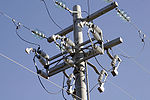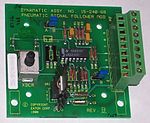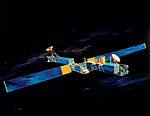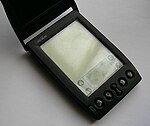Introduction to Electrical Engineering

Electrical engineering (sometimes referred to as electrical and electronic engineering) is a professional engineering discipline that deals with the study and application of electricity, electronics and electromagnetism. The field first became an identifiable occupation in the late nineteenth century with the commercialization of the electric telegraph and electrical power supply. The field now covers a range of sub-disciplines including those that deal with power, optoelectronics, digital electronics, analog electronics, computer science, artificial intelligence, control systems, electronics, signal processing and telecommunications.
The term electrical engineering may or may not encompass electronic engineering. Where a distinction is made, electrical engineering is considered to deal with the problems associated with large-scale electrical systems such as power transmission and motor control, whereas electronic engineering deals with the study of small-scale electronic systems including computers and integrated circuits. Another way of looking at the distinction is that electrical engineers are usually concerned with using electricity to transmit energy, while electronics engineers are concerned with using electricity to transmit information.
Education
[edit | edit source]Electrical engineers typically possess an academic degree with a major in electrical engineering. The length of study for such a degree is usually four or five years and the completed degree may be designated as a Bachelor of Engineering, Bachelor of Science, Bachelor of Technology or Bachelor of Applied Science, depending upon the university. The degree generally includes units covering physics, chemistry, mathematics, computer science, project management and specific topics in electrical engineering. Initially, such topics cover most, if not all, of the sub-disciplines of electrical engineering. Students then choose to specialize in one or more sub-disciplines toward the end of the degree. Some electrical engineers also choose to pursue a postgraduate degree such as a Master of Engineering/Master of Science, a Master of Engineering Management, a Doctor of Philosophy in Engineering or an Engineer's degree. The Master and Engineer's degree may consist of either research, coursework or a mixture of the two. The Doctor of Philosophy consists of a significant research component and is often viewed as the entry point to academia. In the United Kingdom and various other European countries, the Master of Engineering is often considered an undergraduate degree of slightly longer duration than the Bachelor of Engineering.
Typically, academic institutions that offer education and training for the conferment of an engineering diploma are accredited by some governing body made up of single or multiple entities. Accreditation When looking for an academic institution of higher learning, the student should always check to make sure that the institution has proper and up to date accreditation by a respected agency. Some employers may not offer employment for someone who has graduated with an engineering degree from an academic institution that does not hold engineering accreditation. Below is a list of the major accrediting agencies across the world.
- Australia
- Engineers Australia
- Australian Engineering Accreditation Centre [1]
- Canada
- Denmark
- Germany
- ASIIN e. V. [6]
- Europe
- ENAEE (EUR-ACE label) [7]
- France
- Commission des Titres d'Ingénieurs (CTI)Commission des Titres d%27Ing%C3%A9nieur
- Japan
- Japan Accreditation Board for Engineering Education (JABEE) [8]
- Korea
- Accreditation Board for Engineering Education of Korea (ABEEK) [9]
- USA/International
- ABET (formerly known as Accreditation Board for Engineering and Technology) [10]
As a student considers universities that he/she may want to attend, keep in mind that accredited universities are by far preferred, and any university that holds accreditation will likely display it on a university web page or supply the proof of accreditation upon request.
Practicing
[edit | edit source]In most countries, a Bachelor's degree in engineering represents the first step towards professional certification and the degree program itself is certified by a professional body. After completing a certified degree program the engineer must satisfy a range of requirements (including work experience requirements) before being certified. Once certified the engineer is designated the title of Professional Engineer (in the United States, Canada and South Africa ), Chartered Engineer (in the United Kingdom, Ireland, India, Equatorial Guinea and Zimbabwe), Chartered Professional Engineer (in Australia and New Zealand) or European Engineer (in much of the European Union).
The advantages of certification vary depending upon location. For example, in the United States and Canada "only a licensed engineer may seal engineering work for public and private clients". This requirement is enforced by state and provincial legislation such as Quebec's Engineers Act. In other countries, such as Australia, no such legislation exists. Practically all certifying bodies maintain a code of ethics that they expect all members to abide by or risk expulsion. In this way these organizations play an important role in maintaining ethical standards for the profession. Even in jurisdictions where certification has little or no legal bearing on work, engineers are subject to contract law. In cases where an engineer's work fails he or she may be subject to the tort of negligence and, in extreme cases, the charge of criminal negligence. An engineer's work must also comply with numerous other rules and regulations such as building codes and legislation pertaining to environmental law.
Professional bodies of note for electrical engineers include the Institute of Electrical and Electronics Engineers (IEEE) and the Institution of Engineering and Technology (IET). The IEEE claims to produce 30 percent of the world's literature in electrical engineering, has over 360,000 members worldwide and holds over 300 conferences annually. [20] The IET publishes 14 journals, has a worldwide membership of 120,000, and claims to be the largest professional engineering society in Europe. Obsolescence of technical skills is a serious concern for electrical engineers. Membership and participation in technical societies, regular reviews of periodicals in the field and a habit of continued learning are therefore essential to maintaining proficiency.
In countries such as Australia, Canada and the United States electrical engineers make up around 0.25% of the labour force (see note). Outside of these countries, it is difficult to gauge the demographics of the profession due to less meticulous reporting on labour statistics. However, in terms of electrical engineering graduates per-capita, electrical engineering graduates would probably be most numerous in countries such as Taiwan, Japan and South Korea.
Sub-disciplines
[edit | edit source]Electrical engineering has many sub-disciplines, the most popular of which are listed below. Although there are electrical engineers who focus exclusively on one of these sub-disciplines, many deal with a combination of them. Sometimes certain fields, such as electronic engineering and computer engineering, are considered separate disciplines in their own right.
Power
[edit | edit source]
Power engineering deals with the generation, transmission and distribution of electricity as well as the design of a range of related devices. These include transformers, electric generators, electric motors and power electronics. In many regions of the world, governments maintain an electrical network called a power grid that connects a variety of generators together with users of their energy. Users purchase electrical energy from the grid, avoiding the costly exercise of having to generate their own. Power engineers may work on the design and maintenance of the power grid as well as the power systems that connect to it. Such systems are called on-grid power systems and may supply the grid with additional power, draw power from the grid or do both. Power engineers may also work on systems that do not connect to the grid, called off-grid power systems, which in some cases are preferable to on-grid systems.
Control
[edit | edit source] |
| Open-source |
|---|
|
|
|
Control engineering focuses on the modelling of a diverse range of dynamic systems and the design of controllers that will cause these systems to behave in the desired manner. To implement such controllers electrical engineers may use electrical circuits, digital signal processors and microcontrollers. Control engineering has a wide range of applications from the flight and propulsion systems of commercial airliners to the cruise control present in many modern automobiles. It also plays an important role in industrial automation.
Control engineers often utilize feedback when designing control systems. For example, in an automobile with cruise control the vehicle's speed is continuously monitored and fed back to the system which adjusts the motor's speed accordingly. Where there is regular feedback, control theory can be used to determine how the system responds to such feedback.
Electronics
[edit | edit source]
Electronic engineering involves the design and testing of electronic circuits that use the properties of components such as resistors, capacitors, inductors, diodes and transistors to achieve a particular functionality. The tuned circuit, which allows the user of a radio to filter out all but a single station, is just one example of such a circuit. Another example (of a pneumatic signal conditioner) is shown in the adjacent photograph.
Prior to the second world war, the subject was commonly known as radio engineering and basically was restricted to aspects of communications and radar, commercial radio and early television. Later, in post war years, as consumer devices began to be developed, the field grew to include modern television, audio systems, computers and microprocessors. In the mid to late 1950s, the term radio engineering gradually gave way to the name electronic engineering.
Before the invention of the integrated circuit in 1959, electronic circuits were constructed from discrete components that could be manipulated by humans. These discrete circuits consumed much space and power and were limited in speed, although they are still common in some applications. By contrast, integrated circuits packed a large number—often millions—of tiny electrical components, mainly transistors, into a small chip around the size of a coin. This allowed for the powerful computers and other electronic devices we see today.
Microelectronics
[edit | edit source]Microelectronics is the miniaturization of the known technology for a compact and integrated design of electronic component. The most common microelectronic components are semiconductor transistors, which has dramatically revolutionized our life. The first transistor was invented by Shockley and his co-workers at Bell Labs. This opened a new era for semiconductor technology which resulted in the elimination of bulky vacuum tubes. The use of semiconductors, especially silicon, allowed miniaturization of the components as well as faster and more reliable performance.
Microelectronic components are created by processing wafers of semiconductors such as silicon to obtain the desired transport of electronic charge and control of current. The field of microelectronics involves a significant amount of chemistry and material science and requires the electronic engineer working in the field to have a very good working knowledge of the effects of quantum mechanics.
Signal processing
[edit | edit source]Signal processing deals with the analysis and manipulations of signals. Signals can be either analog, in which case the signal varies continuously according to the information, or digital, in which case the signal varies according to a series of discrete values representing the information. For analog signals, signal processing may involve the amplification and filtering of audio signals for audio equipment or the modulation and demodulation of signals for telecommunications. For digital signals, signal processing may involve the compression, error detection and error correction of digitally sampled signals.
Telecommunications
[edit | edit source]
Telecommunications engineering focuses on the transmission of information across a channel such as a coax cable, optical fibre or free space. Transmissions across free space require information to be encoded in a carrier wave in order to shift the information to a carrier frequency suitable for transmission, this is known as modulation. Popular analog modulation techniques include amplitude modulation and frequency modulation. The choice of modulation affects the cost and performance of a system and these two factors must be balanced carefully by the engineer.
Once the transmission characteristics of a system are determined, telecommunication engineers design the transmitters and receivers needed for such systems. These two are sometimes combined to form a two-way communication device known as a transceiver. A key consideration in the design of transmitters is their power consumption as this is closely related to their signal strength. If the signal strength of a transmitter is insufficient the signal's information will be corrupted by noise.
Instrumentation engineering
[edit | edit source]
Instrumentation engineering deals with the design of devices to measure physical quantities such as pressure, flow and temperature. The design of such instrumentation requires a good understanding of physics that often extends beyond electromagnetic theory. For example, radar guns use the Doppler effect to measure the speed of oncoming vehicles. Similarly, thermocouples use the Peltier-Seebeck effect to measure the temperature difference between two points.
Often instrumentation is not used by itself, but instead as the sensors of larger electrical systems. For example, a thermocouple might be used to help ensure a furnace's temperature remains constant. For this reason, instrumentation engineering is often viewed as the counterpart of control engineering.
See Design and implementation of PLC systems for further detail regarding how instrumentation and control systems are designed and implemented.
Computer Engineering
[edit | edit source]
Computer engineering deals with the design of computers and computer systems. This may involve the design of new hardware, the design of PDAs or the use of computers to control an industrial plant. Computer engineers may also work on a system's software. However, the design of complex software systems is often the domain of software engineering, which is usually considered a separate discipline. Desktop computers represent a tiny fraction of the devices a computer engineer might work on, as computer-like architectures are now found in a range of devices including video game consoles and DVD players.
| Educational level: this is a tertiary (university) resource. |
| Type classification: this resource is a course. |
| Subject classification: this is an engineering resource. |
| Completion status: About halfway there. You may help to clarify and expand it. |
